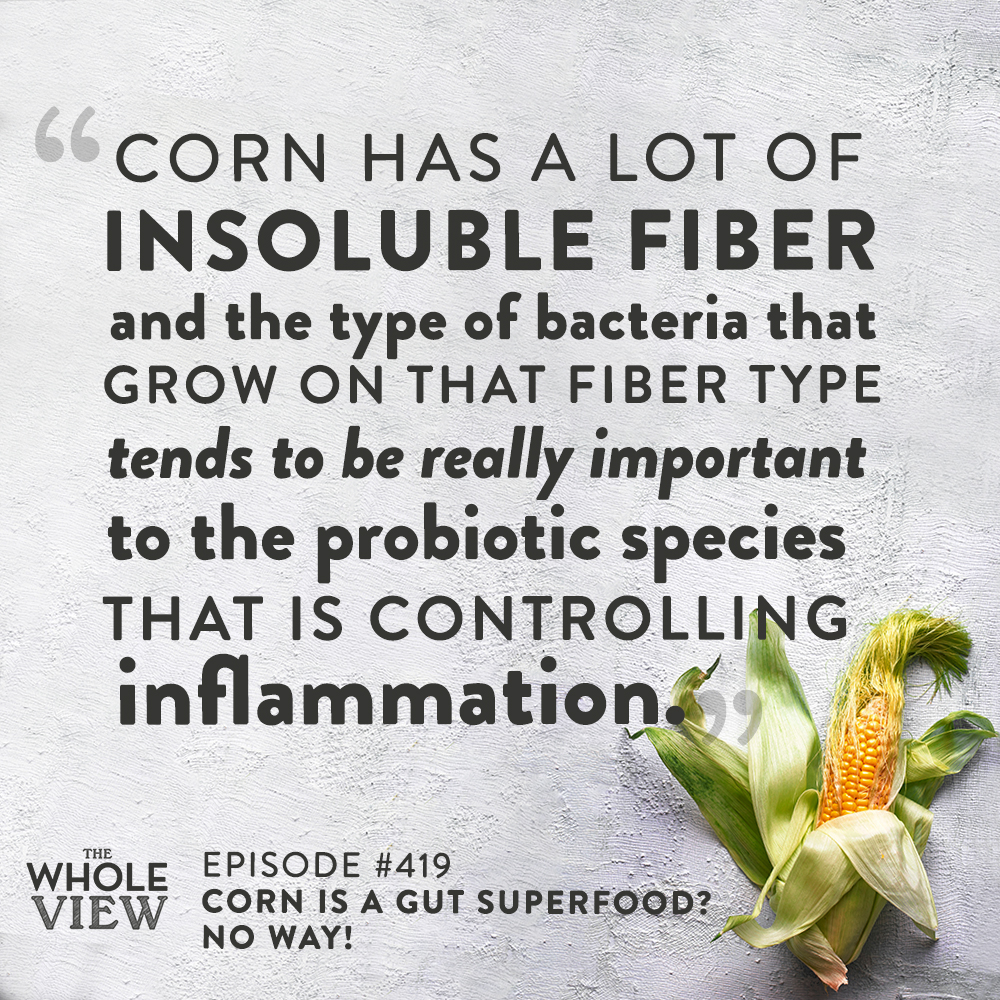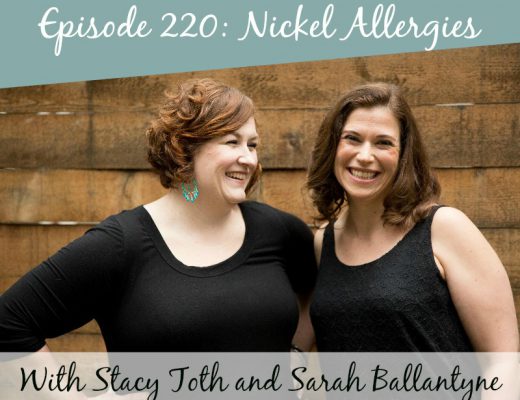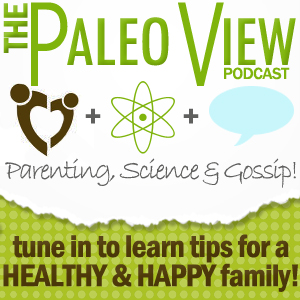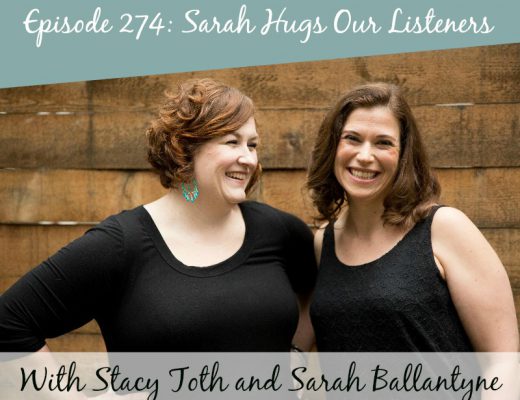
Welcome to episode 419 of The Whole View. This week Stacy and Sarah discuss the various foods that fall outside of the Paleo template but are gut microbiome superfoods and deserving of a second look. In particular, the hosts break down the health benefits of corn and why this might be a food worth reintroducing in a methodical, tested way. Find all the facts and details below!
If you enjoy the show, please review it on iTunes!
The Whole View, Episode 419: Corn is a gut superfood? No way!
Welcome back to the Whole View, episode 419 – if we have done our basic math correctly. (0:27)
This week we are talking about corn, which Stacy has so many questions on.
Stacy wants to know why corn is often not suggested and comes out in a way you can recognize.
We all want to know and are sure that Sarah is going to answer these questions.
There are a few things going on here, Sarah notes.
Listeners, you know if the episode begins with a poop question from Stacy, it is only going to get more interesting from there.
A listener question inspired this week’s episode, but Sarah wants to give a little bit of history to this topic as well.
Sarah’s Microbiome Research
Sarah had been talking about her new gut microbiome eBook, which is called the Gut Health Guidebook. (2:51)
The gut health cookbook is coming out in a few weeks, which is a companion and an extension to the eBook.
One of the things that she did with these eBooks was taking a step back in her research approach from Paleo and AIP.
Sarah worked to look at the science as objectively as she could to understand what the science says.
There were a number of foods that surprised her during her research and one of those foods was/is corn.
Sarah’s inbox blew up when she shared this information with her e-newsletter subscribers.
So we are going to talk about this science and why it was so important to Sarah to approach the research for this eBook from a neutral standpoint.
Listener Comment
Linda wrote, “I LOVED your latest podcast with your mother. (4:13)
My husband is a retired educator who worked in both BC and at the Alberta Distance Learning Center in distance learning.
So, everything your mother talked about are words that I have heard over and over.
We live on the east coast in the province of New Brunswick now where he is a retired distance educator at UNB.
Even though I don’t have children at home, I listened to every word of this podcast.
I loved what your mother said about journalists.
As a retired journalist, I can relate to the deadlines!
I am 70 and have 7 grandkiddies and am sending this podcast link to my own kids.
Around 6 years ago I began on a very strict Paleo program.
There was a time I listened to probably a dozen- or more – Paleo podcasts.
Yours and Stacy’s is the only one I am currently listening to.
I have evolved into a natural way of eating, and away from some of the strict dictates of the old Paleo diet. I do eat gluten now.
And I trust your scientific approach.
You have gotten me to eat mushrooms!
As well, I watch every single one of Stacy’s lovely Instagram posts about her life.
Peace to you both during this most difficult time.”
Stacy shared her thoughts on the way the show has evolved over time and is so grateful for all that Linda shared.
Sarah told her mom that she did such a fantastic job last week and Linda is the listener comment to prove it.
Evolving Beyond Paleo
Linda’s question touches on the evolution of what Sarah considers to be the root of the Paleo diet years ago. (8:36)
It was about looking at the science available at that time.
From 2011 to 2013, Paleo had these big conversations within the community.
Are potatoes Paleo was the big debate in 2011 and 2012.
There used to be a more direct connection between blogging and researchers, which provided direct feedback between influencers and scientific information.
The Paleo diet has always been designed for general health, and then you can kind of layer on as necessary from there.
Way back in the day, the community came together and potatoes were accepted.
We did the same thing around green beans and peas in the pod.
What has happened to Paleo over the last few years is the development of a disconnect between looking at the big picture that science is providing.
Research is constantly evolving and we have to take these updates into account when forming opinions.
This is why this podcast has evolved beyond a Paleo podcast because we are staying rooted in science.
As we reevaluate the merit of some foods, this pulls us away from the rigidity of where the Paleo definition currently stands.
Defining Your 80/20
Stacy pointed out the importance and value of utilizing an elimination diet to see what works best for you. (12:24)
Everyone needs to figure out what is best for them and their unique goals.
Sarah shared on how her approach hasn’t changed, and how she has always used data to inform her choices.
It has always been about understanding the physiology and biochemistry of how foods interact with the human body.
Sarah also shared how her latest research for her new eBook has shaped where her understandings currently lie.
Looking at the microbiome gives us more data to go on in terms of informing who these foods might work for and who they might not.
This is the exercise that she wants to go through in this week’s episode in looking at corn.
It is a really great example of a food that has been governed by that 80/20 rule.
If we start looking at the science, we can see a much more detailed picture that can help inform whether or not this food is going to work for you.
And it will not work for everybody.
This rooted in science approach is the same approach we have always taken on this podcast, and that Sarah has always taken in her articles online.
And we are continuing now that sometimes things align with the Paleo framework and sometimes things don’t.
It doesn’t change how we look at the merits of food.
The criteria is and always has been – what is the nutritional value?
How does it impact insulin, hormone systems, immune health, and gut microbiome health?
Can we see if there is a tradeoff? Or is it a clear winner?
This is the same approach we have always taken and will continue to take.
Today we are applying that to this specific example.
This will convey how we look at foods in this sophisticated way, as opposed to just lumping everything up into food groups that are either ‘yes’ or ‘no’ food groups.
Listener Question
Our listener question this week is from Natalie. (19:47)
Natalie writes, “I was stumped by corn as great for the gut in your newsletter Sarah.
I thought it was extremely hard to digest.
Could you please share why it is now good for the gut?
Thanks!”
There is some nuance here, as corn hasn’t changed.
Sarah thinks that corn has not benefited from the same community conversation as potatoes, rice, and edible potted legumes in the Paleo community.
Corn just hasn’t had the benefit of people going back into the scientific literature and trying to understand what corn has to offer.
Sarah has done that work of going back into the literature to understand how corn impacts the human body.
This was motivated by spending six years works on a book about the gut microbiome.
Broad Classifications
Lets preface this conversation with touching on the too broad brush that the Paleo community has painted some foods with. (21:42)
Paleo has typically been described as ‘eat like a caveman’.
With the idea to eat the way our Paleolithic ancestors ate – like a hunter-gather.
From there, it is described as no grains, no legumes, no dairy, no processed or refined foods.
The standard definition of Paleo has always been what you don’t eat.
What you don’t eat isn’t the thing that makes your diet healthy.
If we lump together all grains, we are lumping together wheat, rice, barley, corn, and all of these different foods and treating them all as the same.
The same is happening with legumes.
We are treating peanuts and soy the same as black beans, lentils, and chickpeas.
The same is also happening with dairy.
When we look at how foods impact the composition and metabolic activity of the gut microbiome, we have the opportunity to separate out the harmful foods from non-harmful foods.
Instead of taking foods and lumping them all together, we have room to be more detailed in our analysis.
This is really important because there are a lot of ways to look at how foods within a broad category impact our health.
No matter how you dig into the science, you see that not all grains are the same.
If you look at the Paleoanthropological record, there are examples of legume and grain consumption.
Instead of creating rules at this macro level of food groups, let’s get much more granular and look at individual foods.
Even if we take this Paleo approach to food, there is enough evidence from both the Paleolithic record as well as modern studied hunter-gathers to indicate that a whole food group approach is not enough detail.
We are missing out.
The more we can vary the diet, vary the nutrients, the phytonutrients, the fiber types, the greater the benefits.
If we can revisit some of these foods, we will get away from dogma and yes/no food lists.
We will also create a framework that is more accessible, which is extremely important.
Starting with the Gut
Why is the gut microbiome a great way to evaluate the merits of individual foods? (31:19)
What types of bacteria want to live in the gut are directly related to the environment they live in.
They are very sensitive to the Ph and the food they are getting to eat, which is what we are eating and not digesting.
Depending on what foods they are eating, that will feed different species.
It is a very sensitive ecosystem to permutation.
You can change your diet and completely change the species of the bacteria that are thriving in your gut in as little as two to three days.
We can measure it pretty easily now as well.
By looking at the bacterial DNA and RNA in stool we can get a pretty good picture of what is living in the small and large intestine.
We can also utilize animal studies, which are a good way to understand gut permeation in the gut microbiome.
It is relatively straightforward to measure what is happening in this system.
Sarah explained more about how we can measure differences.
The more we learn about what our gut bacteria do, the more true the statement is that they do everything.
They basically act as a virtual digestive organ and are basically controlling the health of every cell.
The microbiome is the master controller that is controlling the assembly of the proteins that glue the small intestine cells together.
We can’t fix a leaky gut without fixing an unhealthy gut microbiome.
It becomes a central point since they are involved in the health of every cell.
At least 90% of all disease is linked to the gut microbiome in some way.
Sarah shared a list of the many things that gut dysbiosis is linked to.
Stacy wants to know how we can moderate these things for ourselves so that we are feeding our gut bacteria in a way that promotes them to be happy and healthy.
Food is not the only form of medicine.
There are a lot of things in lifestyle that lead to gut health being affected.
No matter what you do, in some cases, things will be impacted regardless.
Give yourself grace that you do the best that you can with the knowledge that you have.
If you continue to have some of these symptoms, that is what modern medicine is for.
Sarah reminded listeners of the fundamental things that are important for gut health.
Surprising Gut Microbiome Friends
As we get into the other foods, there is this whole collection that is good for the gut microbiome but isn’t foundational necessarily. (42:23)
If there are foods that you can’t tolerate, your gut microbiome is going to be fine if you are doing all the other things.
Sarah thinks this is where corn fits.
As Sarah was going through this research, there were a number of foods that surprised her that fell into this collection.
Certain foods she was expecting, especially based on their fiber measurements.
Here are the ones that are good: black beans, chickpeas, cranberry beans, green beans, lentils, Hmong beans, peas, snap peas, snow peas, and wax beans.
These are all the legumes that are good.
What surprised Sarah is that brown rice is better for the gut microbiome than white rice.
Also surprising, gluten-free oats and barley are good the gut microbiome.
A2 dairy in addition to whey protein is good for the gut microbiome.
However, A1 dairy is not.
Sarah was also very surprised to hear that quinoa is good for the gut microbiome.
Two Points to Consider
That being said, Sarah wants to emphasize two sides of a coin. (45:50)
One, Sarah thinks that these foods where science shows they are good for the gut microbiome are worth a re-look.
If you have been avoiding them for a really long time, consider your individual situation and methodical experimentation to see if they work for you.
These are not foods that are going to be incorporated into the AIP any time soon.
There are problems with all of them.
However, they are foods that deserve a second look.
At the same time, none of these foods are what Sarah would consider foundational foods.
None of these foods are so important for the gut microbiome or so nutrient-dense that we can’t be healthy without them.
If these foods don’t work for you, you will not be missing anything from what you need for general health.
Corn & Nutrition
Sarah thinks that corn has been thrown into this category within Paleo that generalizes it as a grain. (47:28)
Since corn is a grain, and Paleo defines grains as bad, corn is bad.
One of the things that have not done corn any favor is all the refined and manufactured foods that utilize corn as a base.
These highly processed foods are sort of what gives corn a bad name.
We are eliminating all of these products from this conversation.
However, let’s talk about whole corn – sweet corn that is often eaten as a vegetable.
Or we can talk about cornmeal, which is dried and ground whole corn.
Looking at whole corn, corn is a really fantastic source of fiber.
It is also a really good source of B vitamins, vitamin C, and some minerals.
Yellow corn is a really good source of carotenoids and has a fair amount of phytonutrients.
With a cup of fresh sweet corn (that has 132 calories), you are getting 4.2 grams of fiber, 21% of your daily value for B1, 18% of folate, 17% of vitamin C, 14% for magnesium and phosphorus, 13% for vitamin B3, 12% for vitamin B5, and about the same percent for potassium and manganese.
That makes whole corn a nutrient-dense food.
Corn also has some really exciting polyphenols, which Sarah named and explained in greater detail.
If we look at whole corn, it has a lot of compounds in it that are beneficial nutrients, whether they are essential or nonessential.
The Research
Because of the fiber content, there have been a bunch of studies showing that corn can be beneficial. (53:44)
There have been studies showing that corn can enhance satiety.
Corn is also a good source of resistant starch, which can help to flatten the spike of glucose and insulin after a meal.
There was a study done in 47,000 adult men over 18 years that showed that consuming popcorn at least twice a week was associated with at least a 28% reduced risk of diverticulitis.
This is interesting because it has to do with the fiber.
Corn has a lot of insoluble fiber – and the type of bacteria that grow on that fiber type tends to be really important to the probiotic species that is controlling inflammation.
There is also an impact on this fiber type on the regenerative capacity of the gut wall.
So it can basically help to regulate how quickly those cells are turning over.
There are some studies that have looked at how the whole corn is impacting the gut microbiome.
Studies have shown that as little as 2 oz. of whole corn-based food provides the bifidobacterium with the type of fiber that they love.
Bifidobacterium is one of the most important vitamin producers, inflammation micromanagers, and they are a really important species for the gut microbial community in general.
Studies have shown that eating whole corn or corn fiber enhances calcium absorption.
The resistance starch from corn has been shown to be really beneficial as it increases gut microbiome metabolization, producing short-chain fatty acids, which increases the growth of roseburia.
So we have some really great research, especially in humans, showing that corn does some great things.
Stacy’s Question
Stacy has noticed over the last few years in accidentally consuming corn starch, that she does not have the same reaction as she does when she consumes corn. (59:47)
Sarah explained the fiber that is in the corn starch and why her body responds differently to it.
The case that Sarah is making is not for corn starch, but for whole corn.
Stacy is right that there are some problems with it, and a lot of those problems are associated with the protein in corn.
When we have either a food allergy or food intolerance, those are driven by antibody production.
What the antibody binds to is a piece of a protein.
So if you take out the protein, even if you are allergic to something, then there is no protein there to drive the allergy.
This is probably why Stacy is ok with corn starch, but not anything that would include the corn protein.
Corn does not have a particularly high allergy rate.
It is estimated that as little as 1% of Americans have an actual allergy to corn.
However, corn has also been shown to be a gluten cross-reactor.
You can react to gluten in ways that don’t require antibody production.
Up to maybe 25% of people who make antibodies to gluten, that antibody will also bind to corn.
Sarah explained how this reaction differs based on the antibodies that are being produced.
Corn is definitely something that our bodies have the capacity to create antibodies against and learn as food intolerance.
Probably having a leaky gut makes that more likely.
This is one of two really important reasons, why reintroducing corn has to be informed by your personal health history.
And Sarah always recommends a methodical reintroduction protocol.
Pesticide Residue
There is another piece to this though, and that is that corn is the most heavily sprayed crops. (1:07:18)
Back in episode 405, we talked about the impact of glyphosate on the gut microbiome.
Glyphosate is used extensively on corn.
GMO corn is only used for animal feed, but one of the things that we know is that those fields produce residue that spreads to neighboring non-GMO fields.
The FDA did a pesticide residue monitoring report, which is supposed to come out every two years.
The 2018 report seems to be currently missing.
However, the 2016 report showed that 63% of the food crop corn had levels that were considered measurable and below acceptable maximums.
The maximums are set much too high in the USA.
And this report did not give actual raw data, so it didn’t tell us what the levels actually are.
There have always been some studies done from third parties on food from grocery store shelves for third party testing.
High levels of glyphosate were in everything that they tested.
This has to do with how heavily sprayed corn and soy and wheat is, and these foods tend to be in conventional processed foods as well.
Stacy gave a shoutout to one of our previous team members Crystal from Wholefed Homestead, who does a great job talking about heirloom.
Crystal talks about sources and different kinds of things and the difference between heirloom and sprayed foods.
Sarah shared more information on heirloom varieties.
In addition, Sarah covered the way that Genetic Modification is used as a catch-all term.
There is not an issue with the technology, there is an issue with the goal.
Genetically engineered crops have been used to make plants not die when they are sprayed with glyphosate.
We recognize that glyphosate causes gut dysbiosis and is not safe, but is now being used in huge amounts.
This is an example of where the technology is being used with a simplistic idea of increasing crop yield, but it is allowing the food to be sprayed with something that makes it unhealthy for us.
The goal is very important and the big picture is very important.
Humans have been manipulating the genetics of their crops for a few thousand years, and it can be as simple as only planting the seeds from a plant that has specific properties.
Where you don’t have that control is in a wild variety, which is another fun thing to look for.
When It Comes Out Looking the Same
Stacy wanted to follow up and revisit her question from the top of the show.
If you are seeing corn in its complete form in your stool, are you digesting it?
And are you still getting all of these benefits that we just discussed?
If it is coming out the other end intact, you did not digest it.
Identifiable things in the stool are very revealing in terms of either digestive processes or gut microbiome.
One of the first things is chewing, which is a really important thing to do to aid in the digestion process.
Our teeth break things up into small bits so that all of the enzymes that our bodies make to digest can access the small bits.
Because corn has a very fibrous outside coating, if we don’t chew it well, our digestive enzymes won’t be able to access what is inside.
Seeing it intact can mean something as simple as, ‘I ate like a vacuum cleaner instead of chewing my food’.
There is plenty in corn that should be accessible to our digestive processes.
And there is way more in corn that is a food for our gut microbiome.
So all of that fiber is feeding our gut bacteria, not us.
Those species of bacteria that are going to help break down whole corn are ones that really need to be nurtured with a gut microbiome friendly diet all the time.
They need to be nurtured with a gut microbiome friendly lifestyle all the time as well.
So while it could be as simple as needing to chew better, it can also be revealing of a missing collection of a species in the gut microbiome that needs to be nurtured on a regular basis.
There could be a missing piece as to why they are not growing very well.
Closing Thoughts
If a food does come out looking the same, thus revealing it was not properly digested, there are a few things you can do.
You can work on gut microbiome health, digestive health, take supplements to support either side of that equation, and work with a functional medicine practitioner who is familiar with gut health.
Stacy feels that we have provided plenty of data and information in this show.
If you have follow up questions you can submit those.
The real real from Stacy and Sarah on what they think about this show can be found on Patreon.
This is a non-PG, tell-all, that is combined from each episode and shared once a month.
Be sure to check it out here!
Thanks for listening!
For anyone who is interested in digging deeper into the gut microbiome and how that interacts with health, be sure to check out Sarah’s Gut Health Guidebook.
You can also still preorder the Gut Health Cookbook, which will come out in a couple of weeks.
It has 183 recipes in it that all feature gut health superfoods.
Thanks again everyone, we will be back again next week!





